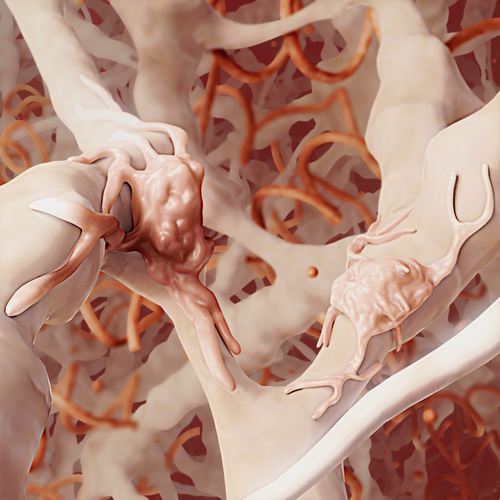In a new study entitled “Second harmonic generation microscopy reveals altered collagen microstructure in usual interstitial pneumonia versus healthy lung,” the authors investigated differences in the structure of human lung tissues retrieved from healthy donors and patients with two different pulmonary fibrotic lung diseases – Cryptogenic Organizing Pneumonia (treatable) and Usual Interstitial Pneumonia (unresponsive to current treatments). They found differences in collagen deposition and extracellular matrix components between Usual Interstitial Pneumonia when compared to both Cryptogenic Organizing Pneumonia and healthy lung tissue, suggesting that these may underlie the differences in treatment outcomes. The study was published in the journal Respiratory Research.
Fibrotic lung diseases are a group of diseases characterized by lung tissue becoming thick, stiff or scarred over time. They result from the accumulation of extracellular matrix components, such as collagen, as well as deposition of fibroblasts and scar-forming myofibroblasts. However, while some fibrotic lung diseases, like Cryptogenic Organizing Pneumonia (COP) are in the majority of treatable cases (with corticosteroids), others are not. One of these cases is Usual Interstitial Pneumonia (UIP), the underlying cause of Idiopathic Pulmonary Fibrosis (IPF), a pulmonary fibrosis disease that leads to respiratory failure and currently remains with very few effective therapies.
In the study, the authors investigated the properties of the collagen- and extracellular matrix deposition in both diseases in order to understand how COP and UIP differ, and with this insight possibly develop new therapeutic strategies. To this end, they performed a microcopy-based study to determine the differences in deposition of fibrillar collagen and other matrix components in UIP compared to COP and healthy control lung tissue. The human lung tissue sections were obtained from the University of Rochester Department of Pathology.
They found that the matrix accumulation of fibrillar collagen structure in UIP lung tissue is significantly different from that in either COP or healthy controls. As a result, as UIP is much harder to treat and since there are no differences in the structure between COP (treatable) and healthy ling tissue, the team highlights that indeed alterations in collagen may be hold the key as to why some pulmonary fibroses respond to treatment, while other do not. Moreover, these findings suggest the potential use of microscopy, specifically second harmonic generation microscopy, as a new diagnostic tool for distinguishing refractory versus treatable pulmonary fibroses.

